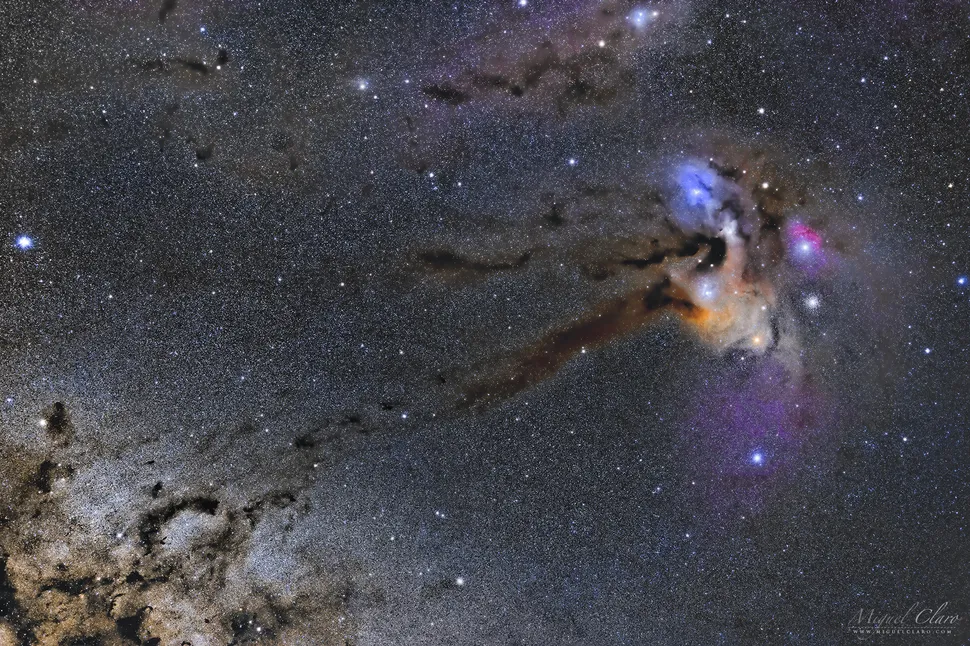Wow, today's APOD makes me think of the art of
William Turner!
And today's APOD also makes me think of another "astronomy-as-art" portrait of the Rho Ophiuchi Molecular Complex, aptly named the Rho Ophiuchi Molecular Complex:
Colorful Stars and Clouds near Rho Ophiuchi
Image Credit & Copyright: Craig Stocks
Rho Ophiuchi Molecular Complex, Credit: Fermin Jiménez Najar
As you can see, if you compare the APOD by Craig Stocks and the picture by Fermin Jiménez Najar, you can see that the APOD has a smaller field of view. We don't see Sigma Scorpii or Tau Scorpii (and their extended nebulas) in the APOD.
A very interesting but relatively unsung part of the Antares-Rho Ophiuchi complex is IC 4603, where star formation is in full swing:
Another infrared image reveals the distribution of dust around Antares, Sigma and Tau Scorpii, Rho Ophiuchi and IC 4603:
Interestingly, the stars of the Antares/Rho Ophiuchi region appear to be of different ages. According to
Wikipedia, Antares is believed to have a mass of about 12 solar masses, originally 15-17 solar masses, and its age is believed to be about 12 million years (or 11-15 million years). By comparison,
Wikipedia says that the most massive component of Sigma Scorpii is believed to have a mass of 18.4±5.4 M
☉ - all right, that a large uncertainty, but it still suggests that the most massive component of Sigma Scorpii is more massive than Antares. The only way that works is if Sigma Scorpii is younger than Antares, and indeed it is believed to be: 8-10 million years for Sigma versus 11-15 years for Antares.
Tau Scorpii is believed to be even younger, some 6 million years. I haven't been able to find an age estimate for Rho Ophiuchi, but in view of the fact that it is a star of spectral class B2 and it appears to be at least a little bit evolved, it could well be as old as Antares or even slightly older (20 million years?).
The beautiful Antares-Rho Ophiuchi molecular cloud, and its illuminating stars, are part of the Scorpius-Centaurus association.
Wikipedia wrote:
The Scorpius–Centaurus association (sometimes called Sco–Cen or Sco OB2) is the nearest OB association to the Sun. This stellar association is composed of three subgroups (Upper Scorpius, Upper Centaurus–Lupus, and Lower Centaurus–Crux) and its distance is about 130 parsecs or 420 light-years.
And that's all from me today!

Ann
 Colorful Stars and Clouds near Rho Ophiuchi
Colorful Stars and Clouds near Rho Ophiuchi







